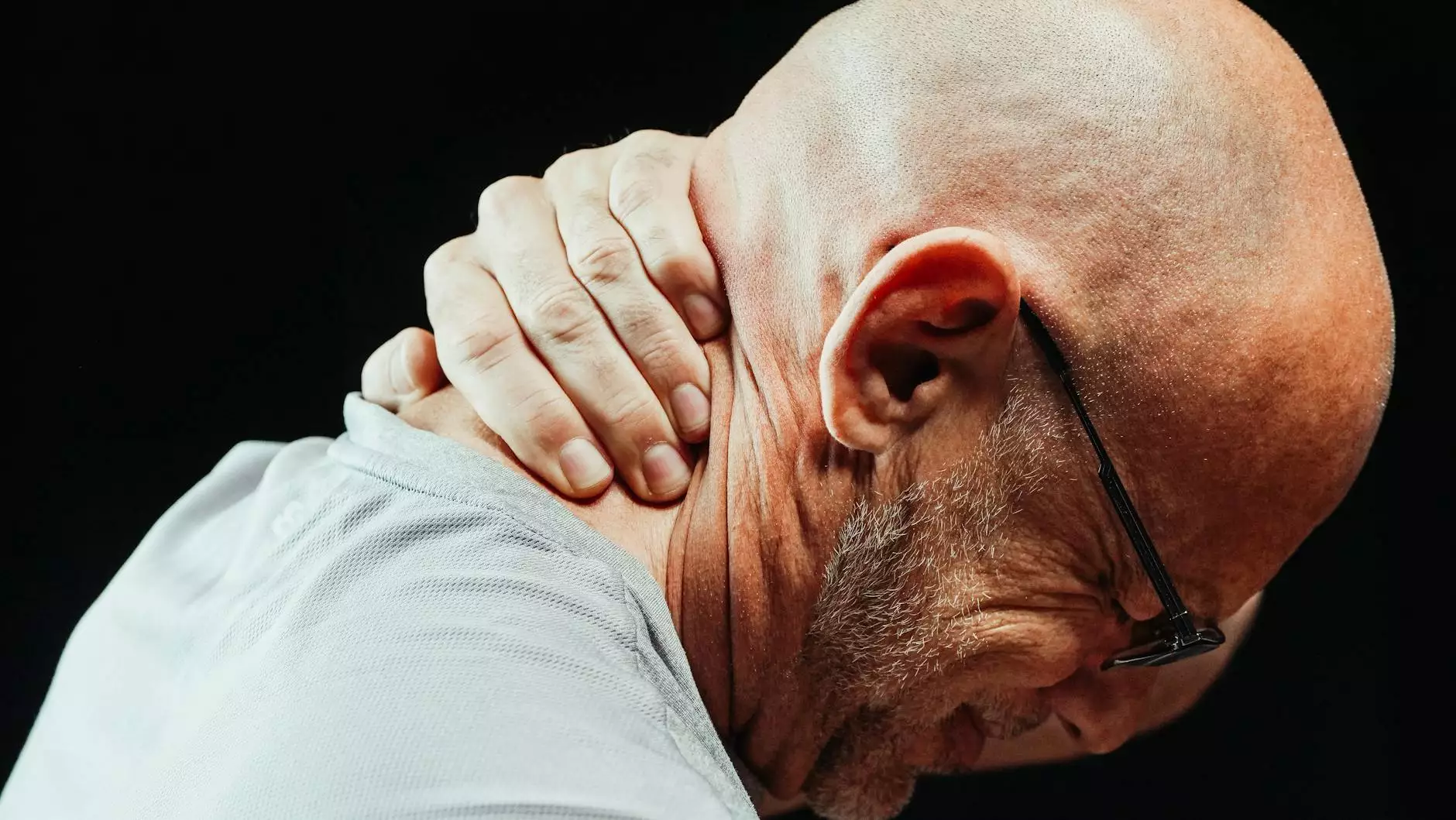Maximizing Shoulder External Rotation Mobility: The Key to Optimal Health, Performance, and Well-being

Introduction: The Significance of Shoulder External Rotation Mobility in Overall Health
The human shoulder is a marvel of biological engineering, providing an extraordinary range of motion necessary for countless daily activities, recreational pursuits, and athletic endeavors. Among its many movements, shoulder external rotation holds particular importance for maintaining joint health, functional performance, and injury prevention. Enhancing shoulder external rotation mobility is not merely a matter of athletic performance but a vital component of overall musculoskeletal health, especially in the context of modern lifestyles that often predispose individuals to joint stiffness and dysfunction.
Understanding Shoulder External Rotation: Anatomy and Function
Anatomy of the Shoulder Joint
The shoulder joint, or glenohumeral joint, is a ball-and-socket joint comprising the humeral head and the glenoid cavity of the scapula. Its unique structure allows for an extensive range of movement, including flexion, extension, abduction, adduction, internal rotation, and external rotation.
Key muscles involved in shoulder external rotation include:
- Infraspinatus: Primarily responsible for external rotation of the shoulder.
- Teres Minor: Assists in external rotation and stabilization.
- Posterior Deltoid: Supports external rotation when shoulder is abducted.
Ligaments and capsule structures also contribute to the stability necessary for fluid movement. Proper function and mobility of these components ensure that external rotation remains smooth and pain-free.
The Importance of Shoulder External Rotation Mobility in Daily Life and Athletic Performance
In Daily Activities
Everyday tasks such as reaching behind your back, tucking in a shirt, or lifting objects overhead depend heavily on shoulder external rotation. Limited mobility in this plane can lead to compensation patterns, joint strain, and increased risk of injuries.
In Sports and Exercise
Athletes, especially those involved in throwing, swimming, or racket sports (like tennis and badminton), rely on optimal shoulder external rotation mobility. Enhanced mobility translates to greater throw velocity, stroke efficiency, and reduced injury risk. Conversely, restricted external rotation can cause shoulder impingements, rotator cuff injuries, and hinder performance.
Common Causes of Restricted Shoulder External Rotation
Several factors can impair shoulder external rotation mobility, including:
- Muscle tightness due to prolonged inactivity or improper training.
- Joint capsule stiffness resulting from repetitive trauma or degenerative changes.
- Rotator cuff injuries causing pain and guarding movement.
- Postural issues such as rounded shoulders or forward head posture.
- Scar tissue formation after surgeries or injuries.
Addressing these causes requires a multifaceted approach emphasizing mobility exercises, strengthening, and postural correction.
Strategies to Improve Shoulder External Rotation Mobility
Targeted Stretching Techniques
Consistent stretching can dramatically enhance external rotation. Effective stretches include:
- Sleeper Stretch: Targets posterior capsule and external rotators by lying on the side and gently pulling the arm towards the floor.
- Cross-Body Shoulder Stretch: Extends the posterior shoulder tissues by pulling the arm across the chest.
- Doorway Stretch: Opens the pectoral and anterior shoulder structures, indirectly improving external rotation.
Pro Tip: Perform each stretch in a controlled manner, hold for 20-30 seconds, and repeat 2-3 times daily for optimal results.
Mobility Drills and Activation Exercises
Incorporate specific exercises designed to activate and mobilize shoulder external rotators, such as:
- External Rotation with Resistance Band: Use a resistance band attached at waist height to perform external rotations, emphasizing controlled movement and full range of motion.
- Wall Angels: Maintain contact between your arms and a wall, moving them up and down to improve mobility and stability.
- Prone External Rotation: Lie face down and lift the forearm while keeping the elbow close to the side, focusing on external rotation strength and mobility.
Postural and Ergonomic Adjustments
Poor posture can restrict shoulder mobility over time. Techniques include:
- Maintaining proper ergonomic workspace setup.
- Performing regular postural exercises.
- Strengthening upper back and shoulder stabilizers to support optimal positioning.
The Role of Healthcare Providers in Enhancing Shoulder Mobility
Chiropractic Interventions
Chiropractors play a pivotal role in diagnosing mobility limitations and employing hands-on techniques like joint mobilizations and soft tissue therapies to restore shoulder external rotation mobility. They often incorporate rehabilitative exercises tailored to the individual’s needs.
Physical Therapy and Rehabilitation
Physical therapists design comprehensive programs emphasizing stretching, strengthening, and biomechanics correction to address mobility deficits and prevent recurrence. Their approach ensures a safe progression from passive to active exercises.
Medical and Surgical Perspectives
In cases of severe structural damage or degenerative conditions, orthopedists may recommend surgical interventions such as capsular releases or rotator cuff repairs. Post-surgical rehabilitation is crucial for restoring shoulder external rotation mobility.
Integrating Technology and Modern Practices to Boost Mobility
Emerging technologies like ultrasound, low-level laser therapy, and electrical stimulation support healing and tissue flexibility. Additionally, tools such as mobility tracking apps and wearable sensors provide real-time feedback to optimize progress.
Preventative Measures and Long-Term Maintenance
Maintaining shoulder external rotation mobility is an ongoing process. Incorporate daily stretching routines, strength training for shoulder stabilizers, and posture awareness to prevent stiffness and injury in the future.
Conclusion: Embrace a Holistic Approach to Shoulder Mobility for a Healthier Life
Enhancing shoulder external rotation mobility is a comprehensive journey that combines targeted exercises, postural improvements, professional interventions, and technological support. Whether for improved athletic performance, pain reduction, or everyday functionality, prioritizing shoulder health empowers you to enjoy a more active and pain-free life.
At iaom-us.com, we specialize in sophisticated health and medical solutions, chiropractic care, and educational resources designed to optimize musculoskeletal health. Take proactive steps today to unlock the full potential of your shoulder mobility and experience lasting benefits.
Additional Resources for Improving Shoulder External Rotation Mobility
- Consult with licensed healthcare providers for personalized assessments.
- Engage with certified physiotherapists for tailored mobility programs.
- Explore continuing education in chiropractics and orthopedics for advanced understanding.
- Use evidence-based tools and technology to monitor and enhance progress.
Remember, improving shoulder external rotation mobility isn’t just about exercises; it’s about adopting a comprehensive lifestyle approach to joint health, strength, and flexibility. Driven by knowledge and consistent effort, you can significantly enhance your movement quality and overall well-being for years to come.









